#françois de vendôme
Text
"The Imitation of M. de Beaufort"
During the Fronde, the buccaneering cleric, Jean François Paul de Gondi, cardinal de Retz, was arrested. His colourful memoirs recounting these events, while hardly an impartial account of his political machinations, do contain many thoughtful and informative musings about the nature and meanings of disgrace. He described how minutes before his arrest, one of his friends had heard that he was to be seized and had rushed to inform him. The cardinal later commented ruefully: "He could not find me, although he only missed me by a few seconds and those seconds would without doubt have preserved my liberty." For a prince of the Church there was clearly nothing dishonourable about fleeing should the opportunity present itself. The contrast with Bassompierre's passivity is striking, and personal temperament and political context were undoubtedly significant. The maréchal believed himself to have been disgraced by his master- Louis XIII, whereas Retz and the Condé, in both 1616 and 1650, had fallen foul of the queen regent or her ministerial favourite. They were, therefore, in possession of a certain amount of leeway when it came to justifying their acts of disobedience. An angry prince de Condé had made the distinction very clear in a quarrel with Marie de Medici in the presence of Louis XIII in February 1615. When the king sought to intervene, the prince had interrupted declaring: "You are my master, I would shed the last drop of my blood in your service, but as for the queen, I cannot say the same."
For those who were prepared to resist arrest or flee to avoid it, the logical next step was to consider escape once in custody. In February 1614, César de Vendôme, the adventurous illegitimate son of Henri IV, had achieved such a feat, setting a family precedent. On the night of 31 May 1648, César's own son, François de Vendôme, duc de Beaufort, who had been imprisoned in Vincennes since the failure of the "cabale des importants", five years earlier, thrilled the public with a daring escape. In a scene worthy of Dumas, he had overpowered his guards and despite suffering a heavy fall from a rope suspended from the château walls secured his freedom. His success inspired others, and when the Grand Condé was asked what books he wished to read while a prisoner, he memorably replied: "The imitation of M. de Beaufort."
The cardinal de Retz was another to follow that illustrious example, and he late recounted his various escape attempts in some detail. Of these, that designed by his ingenious physician was particularly eye-catching. According to Retz, the doctor had the idea of filing ‘the bar of a small window which was in the chapel where I attended Mass, and to attach some sort of mechanical contraption with the aid of which I could, in truth, have been lowered quite easily from the third floor of the keep’. Unfortunately this would only take him half way down the walls of Vincennes, and the intrepid scheme had to be abandoned. Another no less imaginative plot involved the cardinal hiding in a ‘hollow’ on top of a tower which had been filled with various bits of broken masonry. Once there a friendly guard, who had previously been bought off, would attach cords to the side of the wall where Beaufort had escaped. The guard would even produce a blood-stained sword as proof that he had wounded the fleeing prisoner and as the other jailers rushed to the walls they would see a group of horsemen in the distance waiting to welcome the fugitive. As a final coup de theâtre, cannons would be fired several days later at Mézières where Retz was known to have supporters as if to signal his safe arrival. During all of this commotion, the cardinal was to be snugly hidden in the tower, fortified with supplies of bread, wine, and patience until calm was restored. With the help of the corrupted jailer and his accomplices, he would then quietly slip out of the prison dressed as a woman, a monk, or in some similarly unobtrusive disguise.
Alas all too often the best-laid plans come to naught, and an unexpected change of guard led to the blocking of a stairwell that had been crucial to the plan. Undaunted Retz had continued to scheme and when he was transferred to the fortress of Nantes his opportunity finally came. One of his servants plied the guards with drink, and the cardinal escaped after a vertiginous descent of a bastion. His celebrations were marred by an accidental pistol shot, which led to him being thrown in mid-gallop from a startled horse, fracturing, or possibly dislocating, his shoulder and leaving him free albeit in excruciating pain. To conclude his truly memorable adventure, Retz eventually made his way by ship to San Sebastián in Spain from whence he began the journey to Rome.
The cardinal could tell a good tale, but behind the derring-do there are some serious questions for the history of disgrace. On one level, his single-minded determination to escape reflects the peculiar circumstances of a Regency and especially of civil war, and Louis XIV’s later emphasis on the personal nature of his power and authority made such behaviour far more difficult to justify.
Julian Swann- Exile, Imprisonment or Death- the Politics of Disgrace in Bourbon France.
#xvii#julian swann#exile imprisonment or death: the politics of disgrace in bourbon france#cardinal de retz#bassompierre#louis xiii#marie de médicis#henri ii de bourbon condé#césar de vendôme#françois de vendôme#duc de beaufort#cabale des importants#louis ii de bourbon condé#la fronde
0 notes
Text
New tag game choose a folder in your gallery and look the number of photos up as if it was a year. what happened that year
#1669#May 31 – Samuel Pepys stops writing his diary. [5] June 22 – Roux de Marsilly#accused of plotting the assassination of King Louis XIV of#France#is publicly tortured in Paris#France. June 25 – François de Vendôme#etc etc
0 notes
Text


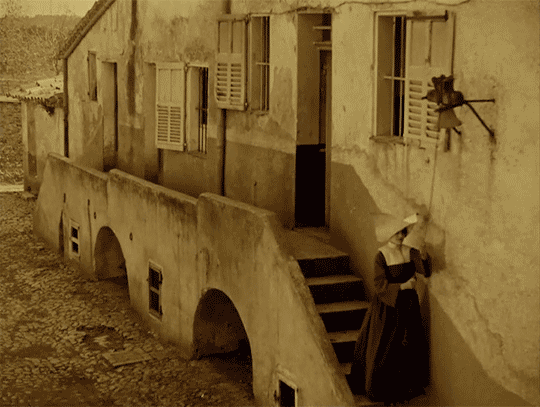



LES MIS LETTERS IN ADAPTATION - M. Myriel Becomes M. Bienvenu, LM 1.1.2 (Les Miserables 1925)
The episcopal palace of Digne adjoins the hospital.
The episcopal palace was a huge and beautiful house, built of stone at the beginning of the last century by M. Henri Puget, Doctor of Theology of the Faculty of Paris, Abbé of Simore, who had been Bishop of Digne in 1712. This palace was a genuine seignorial residence. Everything about it had a grand air,—the apartments of the Bishop, the drawing-rooms, the chambers, the principal courtyard, which was very large, with walks encircling it under arcades in the old Florentine fashion, and gardens planted with magnificent trees. In the dining-room, a long and superb gallery which was situated on the ground floor and opened on the gardens, M. Henri Puget had entertained in state, on July 29, 1714, My Lords Charles Brûlart de Genlis, archbishop; Prince d’Embrun; Antoine de Mesgrigny, the capuchin, Bishop of Grasse; Philippe de Vendôme, Grand Prior of France, Abbé of Saint Honoré de Lérins; François de Berton de Crillon, bishop, Baron de Vence; César de Sabran de Forcalquier, bishop, Seignor of Glandève; and Jean Soanen, Priest of the Oratory, preacher in ordinary to the king, bishop, Seignor of Senez. The portraits of these seven reverend personages decorated this apartment; and this memorable date, the 29th of July, 1714, was there engraved in letters of gold on a table of white marble.
The hospital was a low and narrow building of a single story, with a small garden.
#Les Mis#Les Miserables#Les Mis Letters#les Mis Letters in Adaptation#LM 1.1.2#Les Mis 1925#Les Miserables 1925#lesmisedit#lesmiserablesedit#lesmis1925edit#lesmiserables1925edit#pureanonedits#the SETS of 1925!!#I wish this kept the order and impact of the brick though.#Oh well.
19 notes
·
View notes
Text
Talk to me if you are interested in:
Napoleon and Napoleon II
Rousseau
Charles II of England and his sons
Louis XIII/XVI/XV/XVI (yesss ALL of them)
Philippe I Duc d'Orleans
Marquis de Sade
Peter the Great
Louis Ferdinand, Dauphin
Lord Byron
Literally any of the castrati though my fav are Farinelli, Caffarelli, Matteuccio, Pacchierotti, Tenducci and Guadagni
Casanova (his memoirs are awesome)
John Wilmot (the naughtiest Earl of Rochester)
The Rhine princes (Charles Louis, Rupert, Edward, Maurice)
Louis Auguste (duke of Maine)
Henry Benedict Stuart
Henry Stuart, Duke of Gloucester
Louis Jean Marie de Bourbon, duc de Penthièvre
Charles Townshend, 2nd Viscount Townshend
François Louis, Prince of Conti
Louis Henri of Bourbon
Philippe, Duke of Vendôme
Louis, Duke of Orléans
Philippe, Chevalier de Lorraine
Carlo II Gonzaga Nevers
And thus concludes my subject-to-alteration list of dead men I'd like to discuss. Have a nice day/night! 🌈
#napoleon#rousseau#marquis de sade#louis xvi#louis xv#junot#louis xiv#philippe i duc d'orleans#louis xiii#christian vii#lord byron#peter the great#napoleon ii#Farinelli#Castrati#caffarelli#Pacchierotti#Guadagni#tenducci#casanova#giacomo casanova#charles ii of england#charles ii#matteuccio#john wilmot
15 notes
·
View notes
Text

Gustave Courbet (1819 - 1877)Bourgeois et socialiste - dans la revue Hérodote
Gustave Courbet cultive une technique de peinture conventionnelle mais se veut révolutionnaire et provocateur par le choix des sujets, ce qui lui vaut d'être désigné comme le chef de file de l'école réaliste sous le règne de Napoléon III, aux côtés d'Honoré Daumier et Jean-François Millet.
Un autre regard
Gustave Courbet passe les années heureuses de l'enfance dans la ferme familiale de Flagey. À 14 ans, il entre pour cinq ans au petit séminaire d'Ornans. Il perd complètement la foi mais découvre la peinture sous la direction d'un professeur attentionné, le père Beau.
Il poursuit sa formation à l'Académie de Besançon et «monte» enfin à Paris.
À grand renfort de cours privés et de travail personnel, avec le soutien aussi du marchand néerlandais Hendrik Jan Van Wisselingh, il se fait enfin remarquer au Salon de 1850-1851 avec trois toiles monumentales : Une après-dîner à Ornans, Les casseurs de pierre et surtout Un enterrement à Ornans. Cette toile est une forme de parodie du Sacre de Napoléon par David. Les personnages sont montrés à taille réelle mais dans toute leur crudité et leur médiocrité.
Ces toiles sont le reflet de la nouvelle esthétique réaliste dont Courbet s'affirme le chef de file, en rupture avec la peinture académique et les sujets mythologiques ou historiques.
Foin de convenances
Bourgeois voltairien et anticlérical, convaincu de son génie («Je peins comme un Dieu», dit-il), Gustave Courbet ne s'embarrasse pas de convenances, aidé en cela par la bienveillance du pouvoir impérial. Si conservateur soit-il, celui-ci traite ses artistes avec l'indulgence d'un père pour ses garnements.
L'artiste se rapproche en 1863 du penseur anarchiste Joseph Proudhon (il peindra à sa mort un célèbre portrait du penseur entouré de ses filles).
Conséquent avec lui-même, il refuse en 1870 la Légion d'honneur proposée par le gouvernement de Napoléon III. Après que celui-ci eut été renversé par les républicains, il participe à la Commune de Paris comme conseiller municipal du 6e arrondissement et président d'une Commission pour la protection des beaux-arts. Un décret inspiré par ladite commission ordonne d’abattre la colonne Vendôme, témoin honni de l'ère napoléonienne. Il semble toutefois que Courbet était absent lorsque la décision a été prise et que lui-même préconisait simplement qu’elle soit déplacée.
Arrêté le 7 juin 1871 et interné à Sainte-Pélagie, le peintre est condamné à six mois de prison et à une forte amende en raison de sa participation à la Commune.
Après quoi, il reprend son atelier à Ornans et s’entoure de plusieurs élèves. Mais cette trêve ne dure pas. Il est poursuivi en justice sous l’accusation d’avoir fait abattre la colonne Vendôme pendant la Commune. Ses biens sont saisis et il doit s’exiler en Suisse.
C'est là, à La Tour-de-Peilz, près du lac Léman, qu'il finit ses jours le 31 décembre 1877, à 58 ans.
Via Bernadette Lambotte Philippe Jamart
3 notes
·
View notes
Text
M. Myriel Becomes M. Bienvenu
Volume 1: Fantine; Book 1: A Just Man; Chapter 2: M. Myriel Becomes M. Bienvenu
The episcopal palace of Digne adjoins the hospital.
The episcopal palace was a huge and beautiful house, built of stone at the beginning of the last century by M. Henri Puget, Doctor of Theology of the Faculty of Paris, Abbé of Simore, who had been Bishop of Digne in 1712. This palace was a genuine seignorial residence. Everything about it had a grand air,—the apartments of the Bishop, the drawing-rooms, the chambers, the principal courtyard, which was very large, with walks encircling it under arcades in the old Florentine fashion, and gardens planted with magnificent trees. In the dining-room, a long and superb gallery which was situated on the ground floor and opened on the gardens, M. Henri Puget had entertained in state, on July 29, 1714, My Lords Charles Brûlart de Genlis, archbishop; Prince d’Embrun; Antoine de Mesgrigny, the capuchin, Bishop of Grasse; Philippe de Vendôme, Grand Prior of France, Abbé of Saint Honoré de Lérins; François de Berton de Crillon, bishop, Baron de Vence; César de Sabran de Forcalquier, bishop, Seignor of Glandève; and Jean Soanen, Priest of the Oratory, preacher in ordinary to the king, bishop, Seignor of Senez. The portraits of these seven reverend personages decorated this apartment; and this memorable date, the 29th of July, 1714, was there engraved in letters of gold on a table of white marble.
The hospital was a low and narrow building of a single story, with a small garden.
Three days after his arrival, the Bishop visited the hospital. The visit ended, he had the director requested to be so good as to come to his house.
“Monsieur the director of the hospital,” said he to him, “how many sick people have you at the present moment?”
“Twenty-six, Monseigneur.”
“That was the number which I counted,” said the Bishop.
“The beds,” pursued the director, “are very much crowded against each other.”
“That is what I observed.”
“The halls are nothing but rooms, and it is with difficulty that the air can be changed in them.”
“So it seems to me.”
“And then, when there is a ray of sun, the garden is very small for the convalescents.”
“That was what I said to myself.”
“In case of epidemics,—we have had the typhus fever this year; we had the sweating sickness two years ago, and a hundred patients at times,—we know not what to do.”
“That is the thought which occurred to me.”
“What would you have, Monseigneur?” said the director. “One must resign one’s self.”
This conversation took place in the gallery dining-room on the ground floor.
The Bishop remained silent for a moment; then he turned abruptly to the director of the hospital.
“Monsieur,” said he, “how many beds do you think this hall alone would hold?”
“Monseigneur’s dining-room?” exclaimed the stupefied director.
The Bishop cast a glance round the apartment, and seemed to be taking measures and calculations with his eyes.
“It would hold full twenty beds,” said he, as though speaking to himself. Then, raising his voice:—
“Hold, Monsieur the director of the hospital, I will tell you something. There is evidently a mistake here. There are thirty-six of you, in five or six small rooms. There are three of us here, and we have room for sixty. There is some mistake, I tell you; you have my house, and I have yours. Give me back my house; you are at home here.”
On the following day the thirty-six patients were installed in the Bishop’s palace, and the Bishop was settled in the hospital.
M. Myriel had no property, his family having been ruined by the Revolution. His sister was in receipt of a yearly income of five hundred francs, which sufficed for her personal wants at the vicarage. M. Myriel received from the State, in his quality of bishop, a salary of fifteen thousand francs. On the very day when he took up his abode in the hospital, M. Myriel settled on the disposition of this sum once for all, in the following manner. We transcribe here a note made by his own hand:—
NOTE ON THE REGULATION OF MY HOUSEHOLD EXPENSES.
•For the little seminary—1,500 livres
•Society of the mission—100 livres
•For the Lazarists of Montdidier—100 livres
•Seminary for foreign missions in Paris—200 livres
•Congregation of the Holy Spirit—150 livres
•Religious establishments of the Holy Land—100 livres
•Charitable maternity societies—300 livres
•Extra, for that of Arles—50 livres
•Work for the amelioration of prisons—400 livres
•Work for the relief and delivery of prisoners—500 livres
•To liberate fathers of families incarcerated for debt—1,000 livres
•Addition to the salary of the poor teachers of the diocese—2,000 livres
•Public granary of the Hautes-Alpes—100 livres
•Congregation of the ladies of Digne, of Manosque, and of Sisteron, for the gratuitous instruction of poor girls—1,500 livres
•For the poor—6,000 livres
•My personal expenses—1,000 livres
•Total—15,000 livres
M. Myriel made no change in this arrangement during the entire period that he occupied the see of Digne As has been seen, he called it regulating his household expenses.
This arrangement was accepted with absolute submission by Mademoiselle Baptistine. This holy woman regarded Monseigneur of Digne as at one and the same time her brother and her bishop, her friend according to the flesh and her superior according to the Church. She simply loved and venerated him. When he spoke, she bowed; when he acted, she yielded her adherence. Their only servant, Madame Magloire, grumbled a little. It will be observed that Monsieur the Bishop had reserved for himself only one thousand livres, which, added to the pension of Mademoiselle Baptistine, made fifteen hundred francs a year. On these fifteen hundred francs these two old women and the old man subsisted.
And when a village curate came to Digne, the Bishop still found means to entertain him, thanks to the severe economy of Madame Magloire, and to the intelligent administration of Mademoiselle Baptistine.
One day, after he had been in Digne about three months, the Bishop said:—
“And still I am quite cramped with it all!”
“I should think so!” exclaimed Madame Magloire. “Monseigneur has not even claimed the allowance which the department owes him for the expense of his carriage in town, and for his journeys about the diocese. It was customary for bishops in former days.”
“Hold!” cried the Bishop, “you are quite right, Madame Magloire.”
And he made his demand.
Some time afterwards the General Council took this demand under consideration, and voted him an annual sum of three thousand francs, under this heading: Allowance to M. the Bishop for expenses of carriage, expenses of posting, and expenses of pastoral visits.
This provoked a great outcry among the local burgesses; and a senator of the Empire, a former member of the Council of the Five Hundred which favored the 18 Brumaire, and who was provided with a magnificent senatorial office in the vicinity of the town of Digne, wrote to M. Bigot de Préameneu, the minister of public worship, a very angry and confidential note on the subject, from which we extract these authentic lines:—
“Expenses of carriage? What can be done with it in a town of less than four thousand inhabitants? Expenses of journeys? What is the use of these trips, in the first place? Next, how can the posting be accomplished in these mountainous parts? There are no roads. No one travels otherwise than on horseback. Even the bridge between Durance and Château-Arnoux can barely support ox-teams. These priests are all thus, greedy and avaricious. This man played the good priest when he first came. Now he does like the rest; he must have a carriage and a posting-chaise, he must have luxuries, like the bishops of the olden days. Oh, all this priesthood! Things will not go well, M. le Comte, until the Emperor has freed us from these black-capped rascals. Down with the Pope! [Matters were getting embroiled with Rome.] For my part, I am for Cæsar alone.” Etc., etc.
On the other hand, this affair afforded great delight to Madame Magloire. “Good,” said she to Mademoiselle Baptistine; “Monseigneur began with other people, but he has had to wind up with himself, after all. He has regulated all his charities. Now here are three thousand francs for us! At last!”
That same evening the Bishop wrote out and handed to his sister a memorandum conceived in the following terms:—
EXPENSES OF CARRIAGE AND CIRCUIT.
•For furnishing meat soup to the patients in the hospital—1,500 livres
•For the maternity charitable society of Aix—250 livres
•For the maternity charitable society of Draguignan—250 livres
•For foundlings—500 livres
•For orphans—500 livres
•Total—3,000 livres
Such was M. Myriel’s budget.
As for the chance episcopal perquisites, the fees for marriage bans, dispensations, private baptisms, sermons, benedictions, of churches or chapels, marriages, etc., the Bishop levied them on the wealthy with all the more asperity, since he bestowed them on the needy.
After a time, offerings of money flowed in. Those who had and those who lacked knocked at M. Myriel’s door,—the latter in search of the alms which the former came to deposit. In less than a year the Bishop had become the treasurer of all benevolence and the cashier of all those in distress. Considerable sums of money passed through his hands, but nothing could induce him to make any change whatever in his mode of life, or add anything superfluous to his bare necessities.
Far from it. As there is always more wretchedness below than there is brotherhood above, all was given away, so to speak, before it was received. It was like water on dry soil; no matter how much money he received, he never had any. Then he stripped himself.
The usage being that bishops shall announce their baptismal names at the head of their charges and their pastoral letters, the poor people of the country-side had selected, with a sort of affectionate instinct, among the names and prenomens of their bishop, that which had a meaning for them; and they never called him anything except Monseigneur Bienvenu [Welcome]. We will follow their example, and will also call him thus when we have occasion to name him. Moreover, this appellation pleased him.
“I like that name,” said he. “Bienvenu makes up for the Monseigneur.”
We do not claim that the portrait herewith presented is probable; we confine ourselves to stating that it resembles the original.
6 notes
·
View notes
Photo
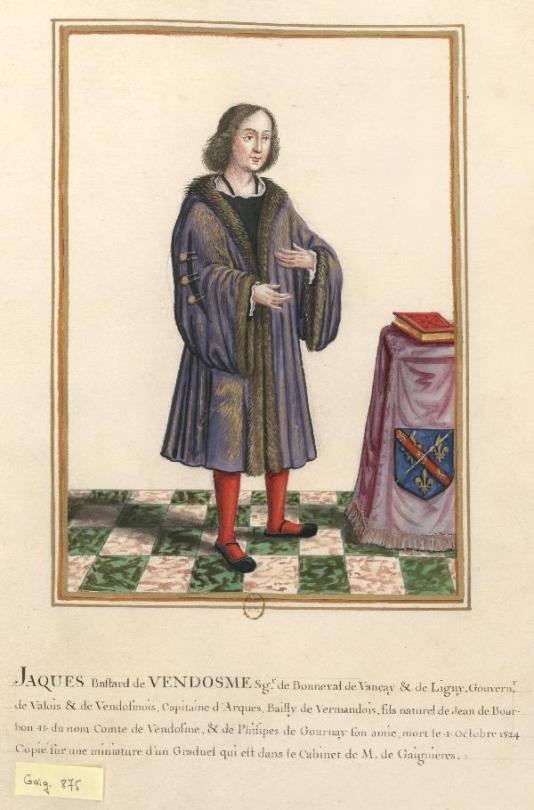
Jacques de Bourbon-Ligny.
The House of Bourbon-Ligny originated from Jean VIII de Bourbon-Vendôme (1428-1477).
The House of Bourbon-Ligny or Vendôme-Ligny or Bourbon-Vendôme-Ligny is an illegitimate branch of the House of Bourbon-Vendôme, itself a branch of the Capetian House of Bourbon.
The Bourbon-Ligny branch died out at the end of the 16th century. It is also called the House of Bourbon-Ligny-Rubempré.
Jacques de Bourbon-Ligny was therefore a bastard of Vendôme, legitimised in December 1518, a knight, lord of Bonneval, Vançay, Fortel, Heux en Ternois, la Vaquerie and Vierge, baron of Ligny (Ligny-sur-Canche in the Pas-de-Calais).
He held various positions: chamberlain to King François I, governor of Valois and Vendômois, captain of Arques, bailiff of Vermandois on 12 June 1514 and of Valois on 30 August 1517
#royaume de france#maison de bourbon#Maison de Bourbon Vendôme#maison de bourbon ligny#bourbon ligny#full length portrait#full-length portrait#french aristocracy#Bâtard légitimé
5 notes
·
View notes
Link
0 notes
Text
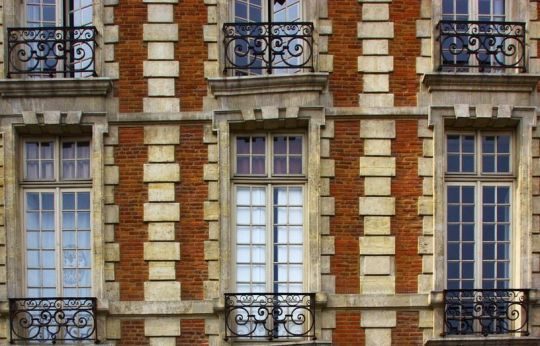
France - Paris Place des Vosges
4e arrondissement: Non, vous n’avez pas trop bu. Les fenêtres du 11, place des Vosges sont bien tordues…
source : https://www.20minutes.fr/paris/diaporama-8394-photo-888994-immeubles-insolites-paris
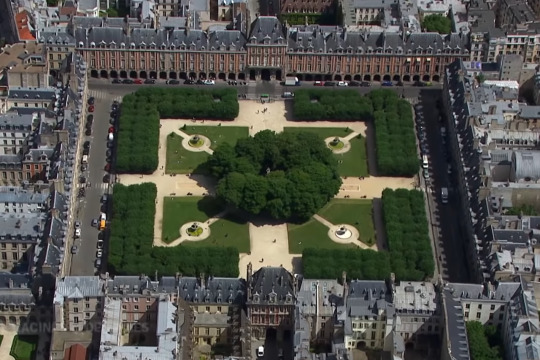
Vue aérienne de la place des Vosges
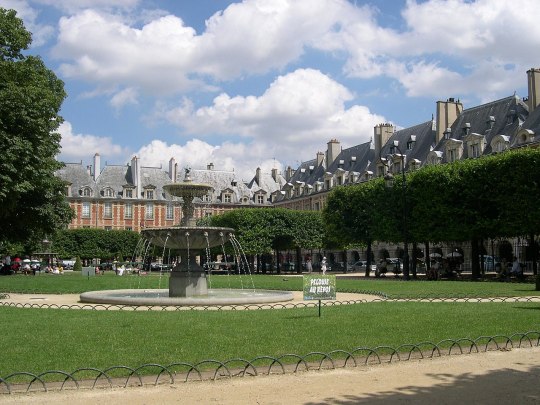
La place des Vosges, place Royale jusqu'en 1792 car initialement dédiée au roi Henri IV et finalement, après l'assassinat du roi par François Ravaillac, dédiée à son fils Louis XIII, est une place de Paris dans le quartier du Marais, faisant partie des 3e et 4e arrondissements.Elle est, avec la place des Victoires, la place Dauphine, la place Vendôme et la place de la Concorde, l'une des cinq places royales parisiennes.
Conçue par Louis Métezeau, elle est la « sœur » de la place Ducale de Charleville-Mézières. Il s'agit de la place la plus ancienne de Paris, juste avant la place Dauphine. Il s'agit d'une place fermée, accessible par une rue principale sur un des quatre côtés et deux rues passant sous des pavillons.La place fait l'objet d'un classement au titre des monuments historiques depuis le 26 octobre 19541 et a bénéficié de la mise en valeur voulue par André Malraux, dans le cadre du PSMV du Marais. Elle est connue pour être le lieu de résidence de plusieurs personnalités issues du monde politique, artistique ou médiatique.
source : https://fr.wikipedia.org/wiki/Place_des_Vosges_(Paris)
***
Place des Vosges, place Royale until 1792 because initially dedicated to King Henri IV and finally, after the assassination of the king by François Ravaillac, dedicated to his son Louis XIII, is a square in Paris in the Marais district, forming part of the 3rd and 4th arrondissements. Along with Place des Victoires, Place Dauphine, Place Vendôme and Place de la Concorde, it is one of the five royal squares in Paris.
Designed by Louis Métezeau, it is the "sister of the Place Ducale in Charleville-Mézières. This is the oldest square in Paris, just before Place Dauphine. It is a closed square, accessible by a main street on one of the four sides and two streets passing under pavilions. The square has been classified as a historic monument since October 26, 19541 and has benefited from the enhancement desired by André Malraux, as part of the PSMV du Marais. It is known to be the place of residence of several personalities from the political, artistic or media world.
source: https://fr.wikipedia.org/wiki/Place_des_Vosges_(Paris)
0 notes
Photo
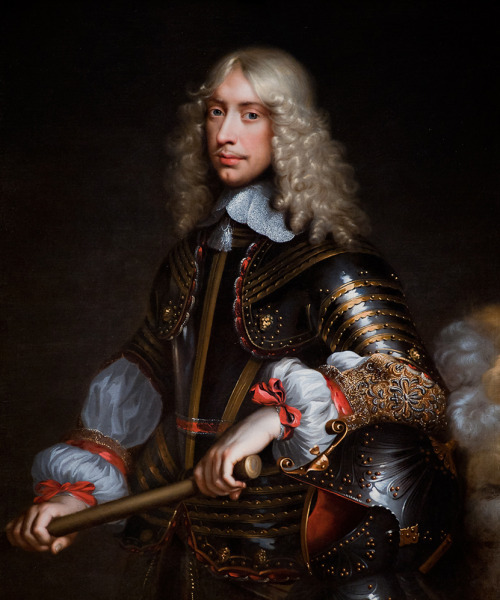
François de Bourbon-Vendôme, Duke of Beaufort
1 note
·
View note
Text
Antoinette de Bourbon
Between 1515 and 1536 Antoinette de Bourbon gave birth every other year; of her twelve children, ten survived to adulthood: Marie (1515), François (1519), Louise (1520), Renée (1522), Charles (1524), Claude II (1526), Louis (1527), Antoinette (1531), a second François (1534), and René (1536). Antoinette's faith in the saints prepared her for the rigours of childbirth and, since in those days nearly half of new-borns did not reach the age of ten, her devotion paid dividends. Not only had she an ever-growing household to care for, but unlike her husband and brother-in-law, who were expected to live beyond their means, she was frugal. Her role went beyond the day-to-day expenditure of feeding and clothing the household at Joinville: she looked after her husband's accounts and, in conjunction with financial officials, advised him on expenditure. In 1520, Claude made her proxy for all his affairs. Two years later, she chided him for spending too much money while on campaign, on wining and dining his Swiss guard, and dressing them too extravagantly. The role of financial advisor was one she would fulfill for her sons and her grandsons too.
[..]
Antoinette was much concerned with the poor, spending her leisure time stitching clothes for them while listening to pious readings. Alms were distributed regularly: 400 poor girls provided with dowries, and 100 bursaries provided to poor students. Legend has it that once, after her sons returned from a hunt, she was angered to discover that they had trampled the fields of local peasants, and so the following day she served them no bread at table: "My children, we have to save on flour, since you have destroyed next year's crop." Antoinette's daily expense account, a fragment of which survives in the British Library, gives credence to this tale [..]
Frugality did not mean that Joinville was cold and unwelcoming. On 8 September 1539 Antoinette wrote to her daughter in Scotland that her father and seven siblings had arrived "to dance at our feast tomorrow." "Our" feast refers to the holiday of San Gennaro (9 September according to the Julian calendar), patron saint of Naples, an indication of how family tradition kept alive the dream of the Angevin Empire. Children were present at Joinville throughout her life, and the great disparity in ages between them meant that the eldest had married and on occasion moved in with their wives and children while their younger siblings were still being cared for by their mother. Particularly significant in the beginning were the children of Antoinette's eldest daughter, Marie, who were joined later by the wives and sons of François, Claude II, and René. In 1534, Marie had married Louis, Duke of Longueville, who claimed royal descent through his great-grandfather, the bastard of Orléans, heroic companion of Joan of Arc. Louis did not live to see their son's second birthday in 1537 and when Marie remarried James V and went to Scotland she left the boy, François, affectionately known as the "little duke", with his grandmother and grandfather at Joinville. She would not see him again for another twelve years [..] In 1547, he was briefly joined by his half-sister Mary Stuart, who had become a precious commodity on the death of her father and whose safety in Scotland could no longer be guaranteed. To protect her from English hands she was sent to her grandmother, before, as befitted royal princesses, joining the royal court. Barely six years old, she enchanted Antoinette: "Our little queen is in as good spirits as possible", she wrote to her eldest son, "and I assure you that she is the prettiest and best [girl] of her age that you've ever seen."
Stuart Carroll - Martyrs and Murderers: The Guise Family and the Making of Europe
#xv#xvi#stuart carroll#martyrs and murderers: the guise family and the making of europe#antoinette de bourbon#capetian house of bourbon vendôme#house of guise#marie de guise#mary stuart#françois de guise#françois iii d'orléans longueville#louis ii d'orléans duc de longueville#james v of scotland#among others
5 notes
·
View notes
Text
François de Vendôme, duc de Beaufort (16 January 1616 – 25 June 1669) was the son of César, Duke of Vendôme, and Françoise de Lorraine. He was a prominent figure in the Fronde, and later went on to fight in the Mediterranean. He is sometimes called François de Vendôme, though he was born into the House of Bourbon, Vendôme coming from his father's title of Duke of Vendôme.
Beaufort is one of the characters of Twenty Years After and The Vicomte de Bragelonne, Alexandre Dumas's sequels to The Three Musketeers. The first book chronicles his escape on Whitsunday - plotted by Athos - and lampoons his tendency to utter malapropisms.
(Wikipedia)

12 notes
·
View notes
Text
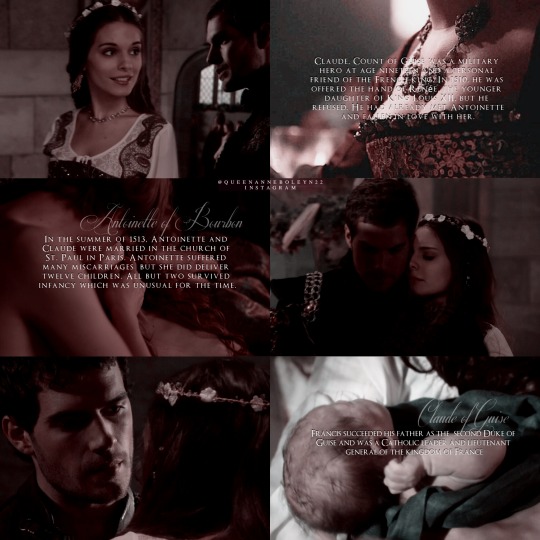
The Guise were a powerful French noble family with estates scattered across northern and eastern France. The main residence was in the Champagne region at Joinville. Claude, Count of Guise was a military hero at age nineteen and a personal friend of the French king. In 1510, he was offered the hand of Renée, the younger daughter of King Louis XII, but he refused. He had already met Antoinette and fallen in love with her. Antoinette came from a good family and had a moderate dowry. In the summer of 1513, Antoinette and Claude were married in the church of St. Paul in Paris. King Louis XII and his son-in-law, the future King Francis I attended the ceremony. Antoinette and Claude then went to live at Bar-le-Duc near Nancy. In September of 1515, Claude fought in the Battle of Marignano and nearly died.Antoinette of Bourbon was the formidable matriarch of the Guise family in sixteenth century France. She had many children who were instrumental in international politics as well as in religious life including her daughter Mary of Guise, Queen of Scotland. Her grand-daughter was Mary Queen of Scots. Antoinette lived to the ripe old age of eighty-nine and the reason we know so much about her is many of her letters survive to this day.
Antoinette of Bourbon-Vendôme was born December 25, 1493 at Chateau de Ham, Picardy, France. Her father was Francis, Count of Vendôme and her mother was Mary of Luxembourg, Countess of St. Pol.
Claude married Antoinette de Bourbon, daughter of François, Count of Vendôme and Marie de Luxembourg, on 9 June 1513; they had 12 children:
-Mary of Guise (1515–1560); married King James V of Scotland and had issue, including Mary, Queen of Scots
-Francis, Duke of Guise (1519–1563)
-Louise of Guise (10 January 1520, Bar-le-Duc – 18 October 1542); married Charles I, Duke of Arschot on 20 February 1541.
-Renée of Guise (2 September 1522 – 3 April 1602), Abbess of St. Pierre, Reims.
-Charles of Guise (1524–1574), Duke of Chevreuse, Archbishop of Reims, and Cardinal of Lorraine.
-Claude, Duke of Aumale (1526–1573)
-Louis I, Cardinal of Guise (1527–1578)
-Philip of Guise (3 September 1529, Joinville – 24 September 1529, Joinville)
-Peter of Guise (b. 3 April 1530, Joinville); died young.
-Antoinette of Guise (31 August 1531, Joinville – 6 March 1561, Joinville), Abbess of Faremoutier
-Francis of Guise (18 April 1534, Joinville – 6 March 1563), Grand Prior of the Order of Malta.
-René, Marquis of Elbeuf (1536–1566)
#the guise#de guise family#antoinette de bourbon#claude de guise#french history#16th century#antoinette x claude#historical#history#edit#history edit#graphic#perioddramaedit#a historic love#historical couple#peter of guise#philip of guise#rene of guise#marie de guise#louis i#renee of guise#charles de guise#bourbon#vendome#king louis xii#joinville#couples#henry cavill#caitlin stasey#the guises
53 notes
·
View notes
Photo


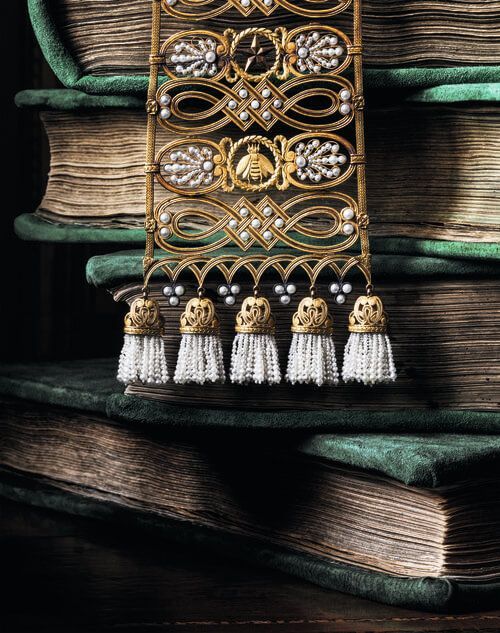

"Ceinture Gothique" de François-Regnault Nitot pour Marie-Louise en or, perles fines et onyx (1813) présentée à l'exposition “Joséphine & Napoléon, une Histoire (extra)ordinaire” de Chaumet dans leur boutique historique - et renovée - de la Place Vendôme, Paris, juin 2021.
22 notes
·
View notes
Text
Announcing New Paris Gallery and Three Alexander Calder Exhibitions
September 15, 2021

Gagosian Announces New Paris Gallery and Three Alexander Calder Exhibitions
Opening October 19, 2021
__________
More than a decade after Gagosian opened its first location in Paris, I am delighted to announce the opening of a new gallery near Place Vendôme. Paris is an important center for modern and contemporary art, and this space will bring a new dimension to Gagosian’s presence there, while complementing the important efforts of museums and foundations in the City of Lights.
—Larry Gagosian
With this new space, Gagosian Paris expands to three venues, all with different historical and architectural references. Rue de Castiglione—with its beautiful arcades dating from the early 1900s, and its proximity to Place Vendôme and some of the world’s most important museums—adds another unique location for artists and estates to present works locally, and deepens the gallery’s commitment to the city.
—Serena Cattaneo Adorno, Director, Gagosian Paris
Gagosian is pleased to announce the opening of a new location in Paris this October. Situated at 9 rue de Castiglione, in the 1st arrondissement, the space is part of the historic Hotel Lotti development, built in 1910. The location is steps from Place Vendôme, where Leo Castelli and René Drouin opened the storied Drouin Gallery in 1939, and within walking distance of the Musée du Louvre, Musée de l’Orangerie, and Musée d’Orsay.
The architectural design of the gallery was led by Rémi Tessier and features elevated ceilings and 15.5-meter windows that provide a view of the gallery’s interior from the historic arcades.
To mark the opening of the new gallery, Alexander Calder’s monumental sculpture Flying Dragon (1975) will be installed in Place Vendôme as part of FIAC Hors les Murs, which presents artworks in emblematic public spaces throughout the city.
The inaugural exhibition at rue de Castiglione will underscore the unique visual language of Flying Dragon, presenting diverse archival materials related to the sculpture and its original maquette, alongside additional works from 1975.
Selected works will also be presented at the rue de Ponthieu gallery to further emphasize Calder’s visual vocabulary and the interplay between nature and abstraction, stillness and motion, and monumentality and ephemerality in his practice.
The new gallery at rue de Castiglione joins rue de Ponthieu, Gagosian’s existing Paris gallery in the 8th arrondissement, which was designed by Jean-François Bodin in collaboration with Caruso St. John. The space opened in 2010, followed in 2012 by the Jean Nouvel–designed Gagosian Le Bourget.
Autumn programming will also feature a new sculpture by Richard Serra at Gagosian Le Bourget
At Gagosian Le Bourget, a new sculpture by Richard Serra, Transmitter (2020), made of weatherproof steel and measuring 4 meters in height, 17.7 meters in width, and 18.2 meters in length, will be installed in the vast main exhibition space. To mark the exhibition, Gagosian will collaborate with the Centre Pompidou to present a three-day retrospective in early 2022 of Serra’s films and videos, drawn from the collections of the Centre Pompidou and the Museum of Modern Art, New York.
Inaugural Exhibition
Calder: 1975 and “Flying Dragon”
Gagosian
9 rue de Castiglione
75001 Paris
October 19–December 18, 2021
Calder: Flying Dragon, 1975
as part of FIAC Hors les Murs
Place Vendôme
75001 Paris
Opening October 19, 2021
Calder
Gagosian
4 rue de Ponthieu
75008 Paris
October 19–December 18, 2021
Richard Serra: Transmitter
Gagosian
26 avenue de l’Europe
93350 Le Bourget
Opening September 18, 2021
_____
Image: The exterior of Gagosian’s new gallery at 9 rue de Castiglione, Paris
5 notes
·
View notes
Photo
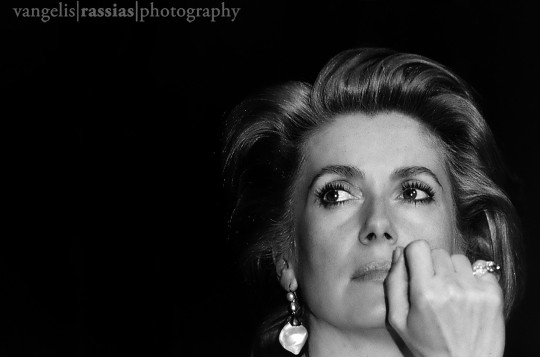
#Catherine Deneuve Portrait
Cannes 1984
Contax RTS Carl Zeiss T* Tessar 200mm f/3,5 Agfapan 100
Catherine Fabienne Dorléac (born 22 October 1943), known professionally as Catherine Deneuve , is a French actress as well as an occasional singer, model and producer, considered one of the best European actresses and the greatest French actress of all time.. She gained recognition for her portrayal of icy, aloof and mysterious beauties for various directors, including Luis Buñuel, François Truffaut and Roman Polanski. In 1985, she succeeded Mireille Mathieu as the official face of Marianne, France's national symbol of liberty. A 14-time César Award nominee, she won for her performances in Truffaut's The Last Metro (1980), for which she also won the David di Donatello for Best Foreign Actress, and Régis Wargnier's Indochine (1992).
Deneuve made her film debut in 1957 and first came to prominence in Jacques Demy's 1964 musical The Umbrellas of Cherbourg. She went on to star in such films as Repulsion (1965), Donkey Skin (1970), Belle de Jour (1967), Tristana (1970) and The Young Girls of Rochefort (1967) opposite her sister, the actress Françoise Dorléac. She was nominated for the BAFTA Award for Best Actress for Belle de Jour, and the Academy Award for Best Actress for Indochine. She also won the 1998 Volpi Cup for Best Actress at the Venice Film Festival for Place Vendôme. Other notable English-language films include The April Fools (1969), Hustle (1975), The Hunger (1983) and Dancer in the Dark (2000).
Deneuve was born Catherine Fabienne Dorléac in Paris, the daughter of French stage actors Maurice Dorléac (1901–1979) and Renée Simonot (b. 1911). Deneuve has two sisters, Françoise Dorléac (1942–1967) and Sylvie Dorléac (born 14 December 1946), as well as a maternal half-sister, Danielle, whom their mother had out of wedlock in 1937 with Aimé Clariond, but who was later adopted by Maurice and took his surname. Deneuve was her mother's maiden name, which she chose for her stage name, in order to differentiate herself from her sisters. Deneuve attended Catholic schools .
Deneuve made her film debut with a small role in André Hunebelle's Les Collégiennes (1957) with her younger sister Sylvie Dorléac who, like their older half-sister Danielle, was an occasional child actress. She subsequently appeared in several films for director Roger Vadim as well as in L'Homme à femmes (1960), which caught the eye of Jacques Demy, who cast Deneuve in his 1964 musical Les Parapluies de Cherbourg, the film that brought her to stardom. Deneuve played the cold but erotic persona, for which she would be nicknamed the "ice maiden", in Roman Polanski's horror classic Repulsion (1965), reinforcing it in Luis Buñuel's Belle de Jour (1967), and reaching a peak in Tristana (1970).Her work for Buñuel would be her most famous .
Further prominent films from this early time in her career included Jean-Paul Rappeneau's A Matter of Resistance (1966), Demy's musical Les Demoiselles de Rochefort (1967) and François Truffaut's romantic thriller Mississippi Mermaid (1969). Deneuve remained active in European films during the 1960s and 1970s, though she limited her appearances in American films of the period to The April Fools (1969), a romantic comedy with Jack Lemmon, and Hustle (1975), a crime drama with Burt Reynolds. Her starring roles at the time were featured in such films as A Slightly Pregnant Man (1973) with Marcello Mastroianni and Le Sauvage (1975) with Yves Montand.
In the 1980s, Deneuve's films included François Truffaut's Le Dernier métro (1980), for which she won the César Award for Best Actress, and Tony Scott's The Hunger (1983) as a bisexual vampire, co-starring with David Bowie and Susan Sarandon, a role which brought her a significant lesbian and cult following, mostly among the gothic subculture. She made her debut film as a producer in 1988, Drôle d'endroit pour une rencontre, alongside frequent co-star Gerard Depardieu.
In the early 1990s, Deneuve's more significant roles included 1992's Indochine opposite Vincent Perez, for which she was nominated for an Academy Award for Best Actress and won a second César Award for Best Actress; and André Téchiné's two movies, Ma saison préférée (1993) and Les Voleurs (1996). In 1997, Deneuve was the protagonist in the music video for the song N'Oubliez Jamais sung by Joe Cocker. In 1998 she won acclaim and the Volpi Cup at the Venice Film Festival for her performance in Place Vendôme. In the late 1990s, Deneuve continued to appear in a large number of films such as 1999's five films Est-Ouest, Le temps retrouvé, Pola X, Belle maman, and Le Vent de la nuit.
In 2000, Deneuve's part in Lars von Trier's musical drama Dancer in the Dark alongside Icelandic singer Björk was subject to considerable critical scrutiny. The film was selected for the Palme d'Or at the Cannes Film Festival. She made another foray into Hollywood the following year, starring in The Musketeer (2001) for Peter Hyams. In 2002, she shared the Silver Bear Award for Best Ensemble Cast at the Berlin International Film Festival for her performance in 8 Women. In 2005, Deneuve published her diary A l'ombre de moi-meme ("In My Own Shadow", published in English as Close Up and Personal: The Private Diaries of Catherine Deneuve); in it she writes about her experiences shooting the films Indochine and Dancer in the Dark. She also provided the voice role of Marjane Satrapi's mother in Satrapi's animated autobiographical film Persepolis (2007), based on the graphic novel of the same name. In 2008, she appeared in her 100th film, Un conte de Noël.
Deneuve's recent work includes Potiche (2010) with frequent co-star Depardieu, Beloved (2011), alongside former co-stars Ludivine Sagnier and Chiara Mastroianni, the popular French adventure comedy Asterix and Obelix: God Save Britannia (2012) with Gerard Depardieu and Valérie Lemercier, screenwriter and director Emmanuelle Bercot's On My Way (2013), Palme D'or winning writer/director Pierre Salvadori's comedy drama In the Courtyard (2014), and André Téchiné's drama In the Name of My Daughter (2014). In 2017, she co-starred alongside Catherine Frot, in writer/director Martin Provost's French drama The Midwife, which has been acquired by Music Box Films for a summer 2017 distribution in the United States.
Deneuve appeared nude in two Playboy pictorials in 1963 and 1965. Her image was used to represent Marianne, the national symbol of France, from 1985 to 1989.[citation needed] As the face of Chanel No. 5 in the late 1970s, she caused sales of the perfume to soar in the United States – so much so that the American press, captivated by her charm, nominated her as the world's most elegant woman. In 1983, American Home Products retained her to represent their cosmetics line and hired world-renowned photographer Richard Avedon to promote its line of Youth Garde cosmetics, for which she famously proclaimed, "Look closely. Next year I will be 40."
She is considered the muse of designer Yves Saint Laurent; he dressed her in the films, Belle de Jour, La Chamade, La sirène du Mississipi, Un flic, Liza and The Hunger. In 1992, she became a model for his skincare line. In 2001, she was chosen as the new face of L'Oréal Paris. In 2006, Deneuve became the third inspiration for the M•A•C Beauty Icon series and collaborated on the colour collection that became available at M•A•C locations worldwide in February that year. Deneuve began appearing in the new Louis Vuitton luggage advertisements in 2007. Deneuve was listed as one of the fifty best-dressed over 50s by the Guardian in March 2013. In July 2017, Deneuve appeared in a video campaign for Louis Vuitton entitled Connected Journeys, celebrating the launch of the brand's Tambour Horizon smartwatch, which also featured celebrities, including Jennifer Connelly, Bae Doona, Jaden Smith and Miranda Kerr.
In 1986, Deneuve introduced her own perfume, Deneuve. She is also a designer of glasses, shoes, jewelry and greeting cards
Deneuve speaks fluent French, Italian and English and has some knowledge of Spanish, though she does not speak the language fluently. Her hobbies and passions include gardening, drawing, photography, reading, music, cinema, fashion, antiques and decoration.
Deneuve has been married once, to photographer David Bailey from 1965 to 1972. She has lived with director Roger Vadim, actor Marcello Mastroianni,cinematographer Hugh Johnson, Spanish model and current television presenter Carlos Lozano, and Canal+ tycoon Pierre Lescure.
Deneuve has two children: actor Christian Vadim, from her relationship with Roger Vadim, and actress Chiara Mastroianni, from her relationship with Marcello Mastroianni. She has five grandchildren.
Deneuve is close friends with the artist Nall and owns some of his works.
On 6 November 2019, BBC News reported that Deneuve suffered a mild stroke and was recuperating in a Paris hospital. Despite the health scare, there was no damage to her motor functions. Five weeks later, she was released from the hospital and spent the remainder of 2019 recuperating at her Paris home.
#catherine deneuve#portrait#portrait photography#famous actress#celebrity#black and white#beauty#french cinema#film star#movies star#beautiful#attractive#analog camera#film#cannes#film festival
15 notes
·
View notes